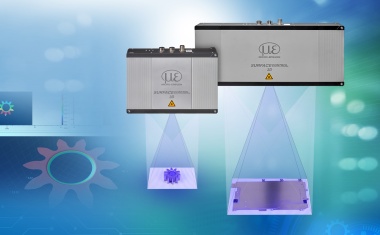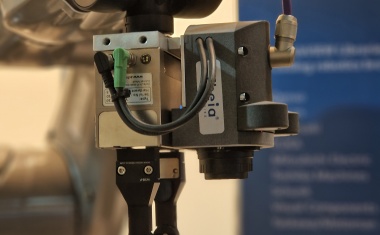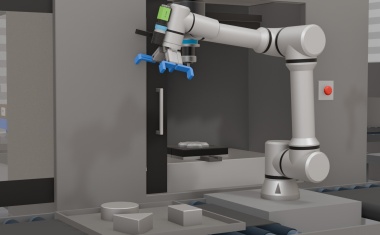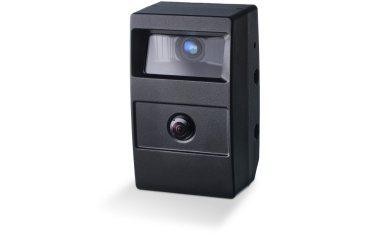In Need of a Keen Eye
Every good surgeon knows that a keen eye and steady hand are keys to success when dealing with neurological or spinal injuries. But advances in 3D stereo vision-based optical tracking technology are adding another tool to the surgeon's toolbox, giving them the ability to virtually see within the human body.
Claron Technology's MicronTracker is a surgical navigation system that uses stereo vision-an imaging technique that can provide full field of view 3D measurements in an unstructured and dynamic environment-to perform real-time sub-millimeter optical pose-tracking. MicronTracker works in conjunction with standard medical imaging technology to give the surgeon a virtual view of the pose (location and orientation) of their surgical instrument within the patient's body. "Unlike older generations of trackers that use infrared lighting, MicronTracker products are fully passive, using available visible light to detect and track objects of interest," says Claudio Gatti, co-CEO of Claron Technology. Gatti adds, "With IR-based systems, a smudge or partial occlusion can lead to a significant measurement error, a condition that is difficult to detect."
Stereo Vision Camera
MicronTracker uses a Bumblebee2 and a Bumblebee XB3 stereo vision camera from Point Grey to detect and track the pose of markers containing an Xpoint, an intersection of 4 high-contrast black and white regions. Advanced stereo algorithms allow MicronTracker to track a marker in 3D as it moves left and right, forward and back, and up and down or swivels around its principal axes. By tracking multiple Xpoints, the surgical instrument position can be accurately obtained with six degrees of freedom (6DOF). "Another big advantage of the Xpoints over IR-based markers is that they are extremely cost-effective," says Gatti. "They can be printed on regular paper and then thrown away, rather than needing to be sanitized. They can also be printed on reusable plastic sheets or even painted or etched permanently on the instruments themselves."
Scanning the Affected Area
Before surgery the neurosurgeon will perform a computed tomography (CT) or magnetic resonance imaging (MRI) scan of the affected area of the patient. Flat, lightweight Xpoint markers are attached to the surgical instruments, and additional markers can be attached directly to the patient's skin and bone. Pairs of images-either VGA or XGA resolution depending on the system-are streamed at up to 48 Hz from the Bumblebee2 to the host PC. The camera uses a standard IEEE 1394 (FireWire) serial interface, known for its high-speed and low latency, to keep system lag to just milliseconds. MicronTracker software performs stereo processing on the image data to track the Xpoint markers during surgery, and overlays the generated real-time 3D data onto the CT or MRI images taken before the operation.
Triangualtion of Rays
At MicronTracker's foundation is stereo vision, a technology that is similar to 3D perception in human vision and is based on triangulation of rays from multiple viewpoints. In practice, one of the key problems to solve in stereo vision is to identify for each pixel in the image the corresponding ray in 3D space. This requires accurate calibration of the camera optical parameters and physical location. The Bumblebee2 stereo vision cameras used in the MicronTracker system are calibrated to an accuracy of 0.3 mm RMS across a field of measurement (FOM) up to 2 meters in diameter. "One of the key advantages of the Bumblebee2 is its calibration retention system, which is designed to protect against mechanical shock and vibration," says Gatti. "For our applications this minimizes the need to do in-field calibration of our systems." MicronTracker's advanced drift compensation algorithms further maintain this accuracy in a wide range of ambient conditions.
Minimize Occlusions
The operating environment itself can present challenges. One is occlusions, where people or objects interfere with the line of sight of the markers and prevent accurate triangulation and tracking. With their small size and close FOM, the Bumblebee2 camera can be positioned to minimize occlusions and operate within limited spaces, such as inside the bore of an imaging scanner. MicronTracker also supports multi-camera configurations to extend and overlap FOMs, and can display the visible light video images from the Bumblebee2, showing the user exactly what the camera sees and where the visibility boundaries are. Another challenge is the wide range of intensity levels found in different operating rooms. The Bumblebee2 supports a mode that quickly cycles the camera through a series of different exposure and gain settings, allowing MicronTracker to combine the resulting images into a single high dynamic range (HDR) image. This allows the system to be used in rooms with lighting that varies from 5 Lux to 400,000 Lux. We feel that we have just begun to scratch the surface of what is possible with stereo-based surgical navigation systems like MicronTracker," says Gatti. "Higher resolution, faster image sensors, increases in processing speed, and reductions in cost will continue to take these applications to a whole new level of usability and performance."











